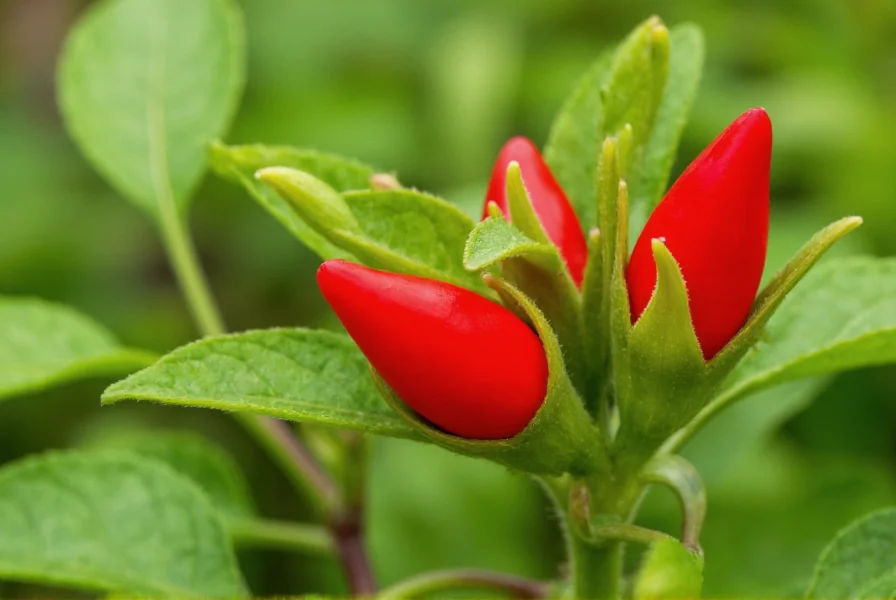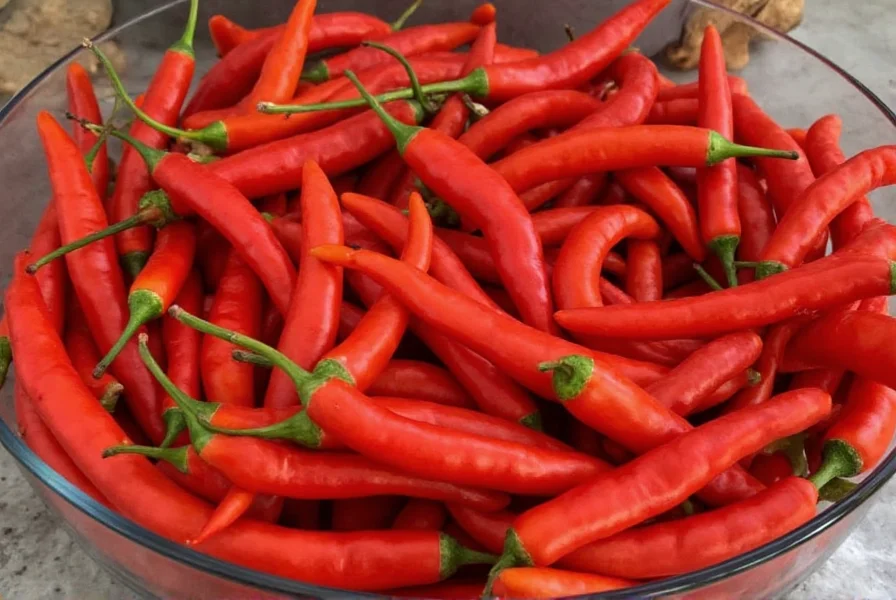Understanding what makes a pepper the spiciest requires examining the Scoville scale, the standard measurement for chili pepper heat. Developed by pharmacist Wilbur Scoville in 1912, this scale measures capsaicin concentration—the compound responsible for that burning sensation. While many peppers claim extreme heat, only laboratory-tested varieties with verified Scoville ratings can legitimately contend for the title of world's spiciest pepper.
The Carolina Reaper: Reigning Champion of Heat
Born from crossing a Pakistani Naga pepper with a Red Habanero, the Carolina Reaper features distinctive red, bumpy skin and a characteristic stinger tail. Its heat profile delivers an initial fruity flavor followed by an intense, lingering burn that can last up to 30 minutes. The Carolina Reaper Scoville units average more than 1.6 million, making it approximately 275 times hotter than a jalapeño and twice as hot as the previous record holder, the Trinidad Moruga Scorpion.
What sets the Carolina Reaper apart isn't just its peak heat, but its consistency. While some peppers might occasionally produce extremely hot specimens, the Reaper reliably delivers extreme heat across multiple growing seasons and locations. This consistency earned it official recognition from Guinness World Records in 2013, a title it has maintained despite numerous challengers.
How Spiciness Is Measured: The Science Behind the Burn
Modern heat measurement has evolved from Scoville's original subjective taste test to precise High-Performance Liquid Chromatography (HPLC) testing. This laboratory method objectively measures capsaicinoid concentration, then converts the results to Scoville Heat Units for consumer understanding.
| Pepper Variety | Scoville Heat Units (SHU) | Heat Relative to Jalapeño |
|---|---|---|
| Carolina Reaper | 1,400,000–2,200,000 | 200–300x |
| Trinidad Moruga Scorpion | 1,200,000–2,000,000 | 150–250x |
| Naga Viper | 1,000,000–1,800,000 | 125–200x |
| Ghost Pepper (Bhut Jolokia) | 800,000–1,041,427 | 80–100x |
| Habanero | 100,000–350,000 | 12–25x |
| Jalapeño | 2,500–8,000 | 1x |
This spiciest pepper comparison shows how dramatically heat levels increase among the world's hottest varieties. The table represents verified laboratory measurements, not anecdotal claims—a crucial distinction in the competitive world of super-hot peppers.

The Evolving Landscape of Super-Hot Peppers
The title of world's hottest pepper has changed hands several times in recent decades. Before the Carolina Reaper's dominance, the Ghost Pepper (Bhut Jolokia) held the record with approximately 1 million SHU. Prior to that, the Red Savina Habanero claimed the title at around 580,000 SHU.
Several contenders have emerged since the Reaper's certification, including the Pepper X (reportedly up to 3.2 million SHU) and the Dragon's Breath pepper. However, without official Guinness World Records verification through standardized laboratory testing, these claims remain unofficial. The history of the world's hottest pepper demonstrates how selective breeding continues to push the boundaries of capsaicin production.
Safety Considerations with Extreme Heat Peppers
Handling peppers with Carolina Reaper heat levels requires serious precautions. Capsaicin can cause severe skin irritation, temporary vision damage, and respiratory issues. Experts recommend:
- Wearing nitrile gloves when handling super-hot peppers
- Avoiding contact with face or eyes during preparation
- Working in well-ventilated areas to prevent inhalation of capsaicin particles
- Having dairy products (milk, yogurt) on hand to neutralize the burn
- Starting with minuscule amounts when cooking with these peppers
Medical professionals warn that consuming extremely hot peppers can cause acute gastritis, abdominal pain, and in rare cases, more serious complications. The safely handling extremely hot peppers guidelines exist for good reason—these aren't peppers to be taken lightly.
The Future of Super-Hot Peppers
Breeding programs worldwide continue developing new varieties that push heat boundaries even further. Some researchers are exploring genetic modification techniques to create peppers with unprecedented capsaicin levels, while others focus on stabilizing existing super-hot varieties for more consistent heat profiles.
However, the practical limit of human tolerance may be approaching. Most consumers find peppers beyond 500,000 SHU uncomfortably hot for regular culinary use. The Carolina Reaper vs Ghost Pepper comparison shows how even among super-hots, there's a significant jump in heat that many enthusiasts find challenging.
Conclusion: More Than Just Heat
While the quest for the spiciest pepper captures public imagination, heat alone doesn't define a pepper's value. Flavor complexity, aroma, and culinary versatility matter greatly to chefs and pepper enthusiasts. The Carolina Reaper, despite its extreme heat, offers a distinctive fruity flavor that makes it valuable in specialty hot sauces when used judiciously.
As new varieties emerge and testing methodologies improve, the title of world's spiciest pepper may change again. For now, the Carolina Reaper stands as the verified champion—a testament to both nature's diversity and human ingenuity in plant breeding.
What is the exact Scoville rating of the Carolina Reaper?
The Carolina Reaper has an average Scoville Heat Unit (SHU) rating of 1,641,183, with individual specimens testing as high as 2.2 million SHU. This measurement comes from official laboratory testing conducted for Guinness World Records certification.
How does the Carolina Reaper compare to other hot peppers?
The Carolina Reaper is approximately 275 times hotter than a jalapeño and about twice as hot as a Ghost Pepper. It surpasses the previous record holder (Trinidad Moruga Scorpion) by several hundred thousand Scoville units on average, making it the undisputed hottest verified pepper variety.
Is the Dragon's Breath pepper hotter than the Carolina Reaper?
While some sources claim Dragon's Breath reaches 2.48 million SHU, these measurements lack official verification through standardized laboratory testing. The Carolina Reaper remains the officially recognized hottest pepper by Guinness World Records based on verified testing protocols.
Can eating a Carolina Reaper be dangerous?
While consuming Carolina Reaper peppers isn't typically life-threatening for healthy adults, it can cause severe discomfort including intense burning sensation, sweating, nausea, and temporary gastrointestinal distress. In rare cases, extremely spicy peppers have been associated with more serious conditions like thunderclap headaches or esophageal tears from violent retching.
How should I handle Carolina Reaper peppers safely?
Always wear nitrile gloves when handling Carolina Reaper peppers, avoid touching your face, work in a well-ventilated area, and wash all surfaces and tools thoroughly after use. Consider using eye protection as airborne capsaicin can cause significant irritation. Never use bare hands, as capsaicin can remain on skin for hours and accidentally transfer to sensitive areas.
Frequently Asked Questions
What is the exact Scoville rating of the Carolina Reaper?
The Carolina Reaper has an average Scoville Heat Unit (SHU) rating of 1,641,183, with individual specimens testing as high as 2.2 million SHU. This measurement comes from official laboratory testing conducted for Guinness World Records certification.
How does the Carolina Reaper compare to other hot peppers?
The Carolina Reaper is approximately 275 times hotter than a jalapeño and about twice as hot as a Ghost Pepper. It surpasses the previous record holder (Trinidad Moruga Scorpion) by several hundred thousand Scoville units on average, making it the undisputed hottest verified pepper variety.
Is the Dragon's Breath pepper hotter than the Carolina Reaper?
While some sources claim Dragon's Breath reaches 2.48 million SHU, these measurements lack official verification through standardized laboratory testing. The Carolina Reaper remains the officially recognized hottest pepper by Guinness World Records based on verified testing protocols.
Can eating a Carolina Reaper be dangerous?
While consuming Carolina Reaper peppers isn't typically life-threatening for healthy adults, it can cause severe discomfort including intense burning sensation, sweating, nausea, and temporary gastrointestinal distress. In rare cases, extremely spicy peppers have been associated with more serious conditions like thunderclap headaches or esophageal tears from violent retching.
How should I handle Carolina Reaper peppers safely?
Always wear nitrile gloves when handling Carolina Reaper peppers, avoid touching your face, work in a well-ventilated area, and wash all surfaces and tools thoroughly after use. Consider using eye protection as airborne capsaicin can cause significant irritation. Never use bare hands, as capsaicin can remain on skin for hours and accidentally transfer to sensitive areas.











 浙公网安备
33010002000092号
浙公网安备
33010002000092号 浙B2-20120091-4
浙B2-20120091-4